High-speed steam cultivators (KPS): purpose, device and models

The steam cultivator greatly simplifies the preparatory stage of the sowing process. This device loosens the layers of soil, cleans it of weeds and even promotes better absorption of nutrients.
Scope of application
The steam cultivator is designed for continuous tillage. The purpose of such a procedure is as follows: first, loosen the soil to a given depth so that lumps form, and then level the surface layer and thereby prevent the development of weeds. Preparation is carried out prior to planting to enhance the soil's ability to absorb liquid and saturate with moisture. In addition, it stops excess moisture evaporation. The depth at which the processing will be carried out depends on the planned plantings, the composition and condition of the soil. As a rule, dense soil with a large number of plant roots requires deep cultivation, and it will be enough for well-groomed soil to loosen exclusively to the level of sowing.

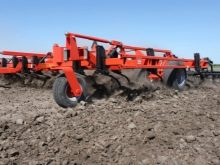
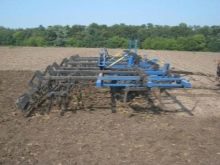
Specifications
A steam cultivator, as a rule, is trailed, for example, the KPS-10 and KPS-8 models, by the example of which you can consider the main technical characteristics. The working depth in all cases varies from two to 10 centimeters, and the working speed ranges from 8 to 14 kilometers per hour. The same parameters are the step of the footprint - 15 centimeters, the overlap of the working bodies, equal to 50 millimeters, the height of the rack, reaching 650 millimeters, as well as the cross-section of the rack, corresponding to 60 by 12 millimeters. The weight of the "KPS-10" is 3600 kilograms, and the weight of the "KPS-8" corresponds to 2800 kilograms.
The capture width of "KPS-10" reaches 10 meters, and the capture width of "KPS-8" corresponds to 8 meters. The productivity of the first unit ranges from 8 to 14 hectares per hour, and the productivity of the second - from 6.4 to 11 hectares per hour. The number of KPS-10 paws is 68, and the number of KPS-8 paws corresponds to 54 pieces. The power of the tractor working with the first cultivator should be equal to 147.1 kilowatts, and with the second cultivator a little less - 117.7 kilowatts. The frame, by the way, for both models is folding, and the number of rows of paws is four.
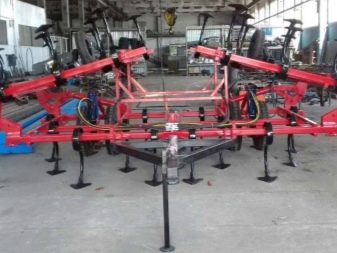
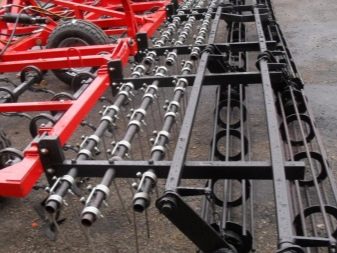
Device
The main working tool of a steam cultivator is its paws. Structures are lancet, spring, knife-like and chisel-shaped. There may also be discs. The choice of paws is made depending on the condition of the land and on the planned sowing, namely:
- knife-like parts allow cutting weeds and loosening at a shallow depth;
- chisels are used mainly to loosen the surface of the site;
- spring devices will allow you to pull out the deep roots of weeds that have been in the same place for a long time;
- discs destroy the earth crust and process the soil throughout the growing season.
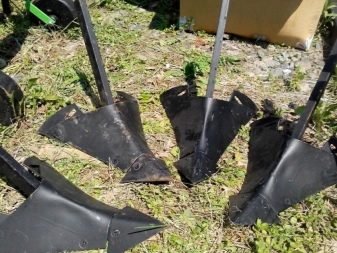
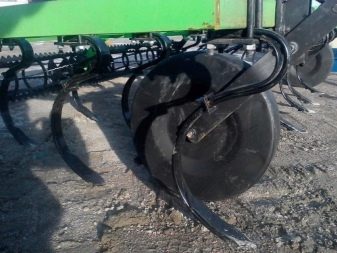
The trailed cultivator is designed according to one principle, which can be considered on the example of "KPS-4". On the flat frame, the beams, wheels, as well as the side beams of the snare are fixed. In this case, the running wheels will have to be mounted on the half-axles of the brackets so that the outer tip is connected to the side beam of the bottom by means of a screw mechanism. The latter is responsible for how deep the device will submerge.A drawbar with a wheel adjustment mechanism and a hydraulic cylinder is also fixed on the front of the frame, which will be used to raise the frame when the moving vehicle is to be used in a transport-only format, without a handling one.
On shortened beads, it is mounted on one lancet share, and on elongated beads - on a pair of loosening ones. The leg shank is fixed to the beam with an adjusting bolt, bar and holder. The socks of the loosening paws are either one-sided or double-sided. The essence of the second is that when one end is worn out, they can be turned 180 degrees and used again. By the way, additional harrows will be hung on a structure of four rods with rods, the same number of guy wires and leads.
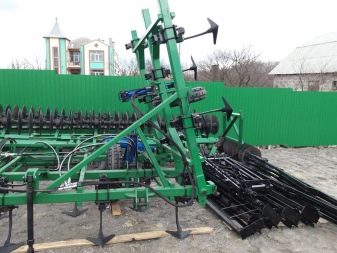
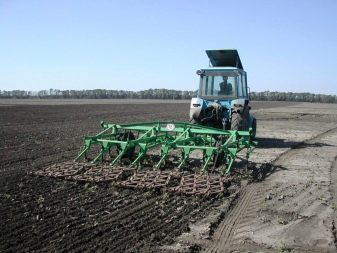
Working principle and service
Before using the cultivator, it is imperative to set up and adjust it. If this is not its primary operation, then you will have to clean the device from dirt and organic fragments. Next, the presence of the required parts and their condition is checked, as well as the fact whether something needs to be strengthened or tightened, for example, the oil seals on the hub. If necessary, defective parts are replaced with new ones, for which it is always worth having spare parts in stock. The flat wheels are inflated and the bearings are additionally lubricated.

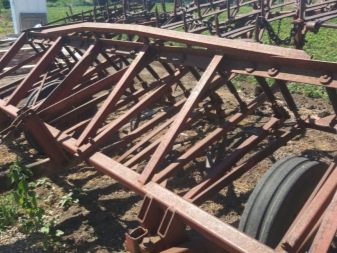
The cultivator must be adjusted on a leveled area. During this process, a lining should be placed under the wheels, which will be less than the immersion depth by 2 or 3 centimeters, which disappeared due to the lowering of the wheels. It is important to maintain the same height of both wheels for accurate adjustment and further operation. There is also a lining under the stand, the thickness of which corresponds to 350 millimeters, to which is added the parameter used for the lining under the wheels. At the next stage, the working units are adjusted to the required stroke depth. At this time, the moving device is prepared, after which both components are combined.
The very process of operation of the KPS steam cultivator is as follows: a moving device with an attached cultivator drives into the treated area. The frame is lowered in such a way that the tines penetrate into the soil to the required depth. During this process, the stalks and roots of the weeds are trimmed with the sharp parts of the paws.
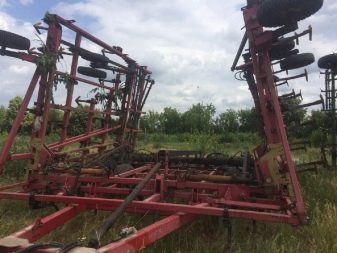
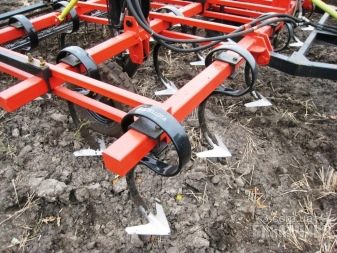
The lumps that were on the surface move up the legs, and then break up into small fragments at the moment they fall down. Thus, a uniform layer of earth is formed on the surface. Sometimes, in order to crush the soil more intensively, the general scheme is supplemented by the action of tooth harrows placed on the cultivator. By the way, the size of how deeply the legs sink can be changed using the support wheels. When the latter rise, the impact increases inward, and when they go down, it decreases. Whether or not the processing takes place uniformly can be determined by interacting with the spring on the rod. Squeezing it increases the depth of the stroke, and relaxation, accordingly, decreases it.
It is important to mention that the cultivation itself is first performed across the main cultivation, and then - perpendicular to the previous run. The device usually moves in a shuttle motion. After finishing the processing of the main passes, it is necessary to pay attention and process the turning zones of the site.
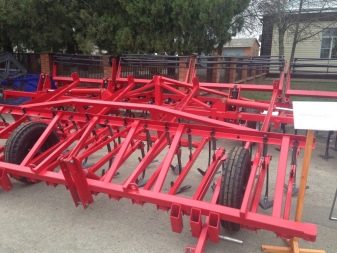

Models
The KPS-4 cultivator is used before sowing. With the help of the device, multilayer loosening of the soil is carried out, weeds are destroyed, fertilizers are applied and harrowing is carried out at a speed of up to 12 kilometers per hour. This cultivator can be both mounted and trailed. It is worth mentioning that KPS-4 can be equipped with additional harrows.
The soil is cultivated with the help of lancet-type tines, loosening tines and spring tines for loosening. The former are able to cover the width of the site, equal to either 27 or 33 centimeters. Rigid shank loosening tines handle widths from 35 to 65 millimeters. Finally, the spring arms have a grip width of 5 millimeters. For the paws, special beams are equipped, connected by hinges to the cultivator frame.
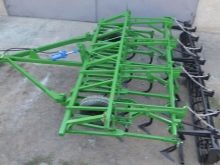
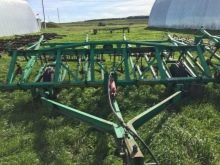
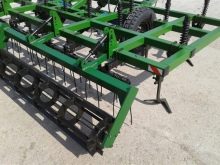
In this case, the lancet paws are distributed in two rows in a checkerboard pattern - 27 cm in the first row, and 33 cm in the second row, on a long auxiliary beam. In the case when the soil is cultivated at a depth of up to 25 centimeters, loosening paws are used, and at 16 centimeters depth - spring loosening paws. In this case, short beams are equipped with one loosening paw, and long ones - with two.
The cultivator "KPS-8" is used for cultivating the soil before sowing, and for caring for pairs, accompanied by harrowing. The design allows the use of both tooth and spring harrows. The depth to which the soil can be cultivated varies from 5 to 12 centimeters. "KPS-8" also allows you to get rid of weeds.
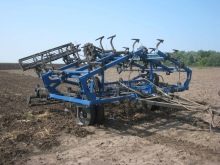
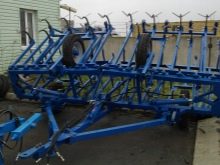

The "KPS-6" cultivator is used for cultivating any soil. In this case, harrowing can occur only with stony debris not exceeding 60 millimeters. This device is quite simple to operate. It has a reinforced snare that prevents breakage, as well as the ability to hang tine harrows. The cultivator's wheels are equipped with pneumatic tires, thanks to which the attachment moves smoothly, which means that the soil is processed evenly. "KPS-6" is often used for early spring treatments.
Presowing stubble "KPS-12" allows you to cultivate seams of land up to 9 meters wide to a depth of 15 centimeters. It is important to mention that the impact on the soil also occurs on the stubble. The cultivator has four rows of tines, on which the paws are located with a width corresponding to 280 millimeters. Thanks to this design, plant fragments will not clog parts, and therefore disrupt the work of the cultivator. By the way, there is also a screw roller, the diameter of which corresponds to 350 millimeters. However, this function is optional, and "KPS-12" functions perfectly well without it. The depth of tillage is regulated by means of a special handle, which is equipped with a special scale.
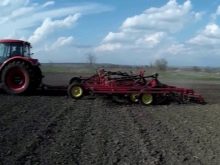
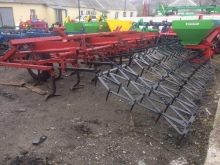

For information on how to prepare a high-speed steam cultivator (KPS) for work, see the next video.



































































The comment was sent successfully.